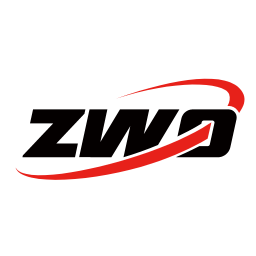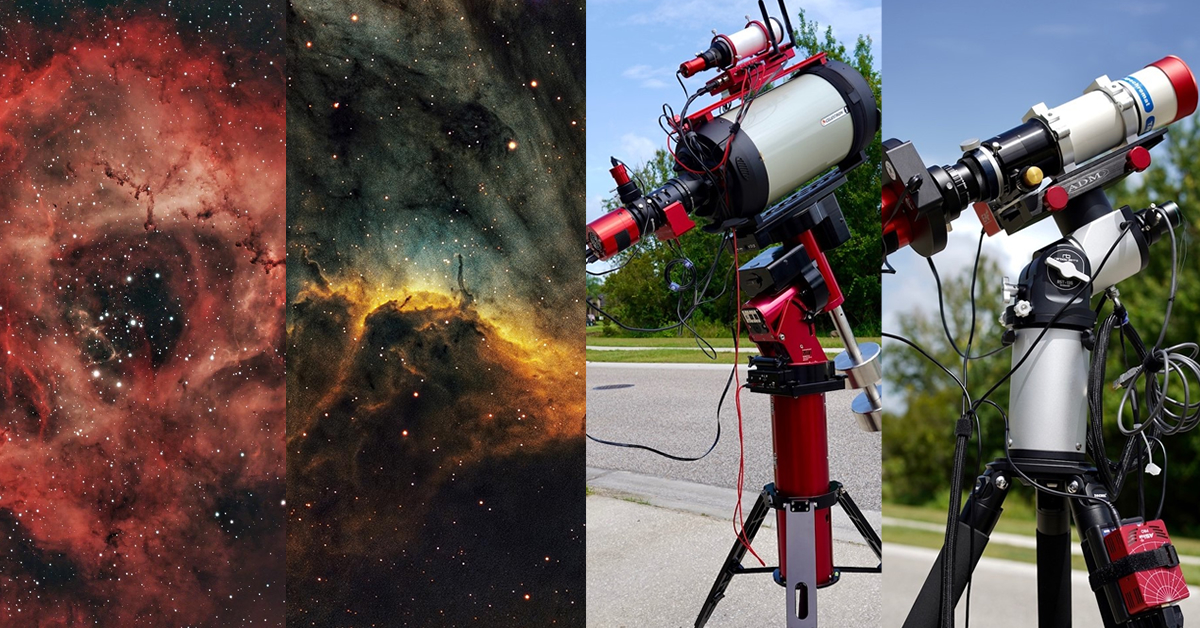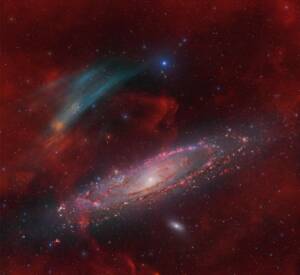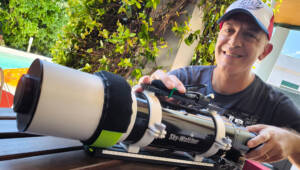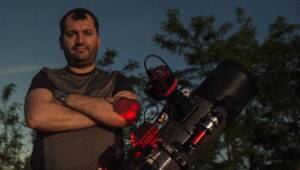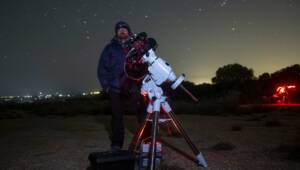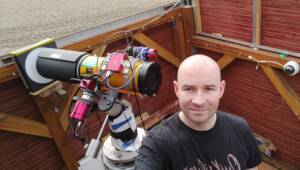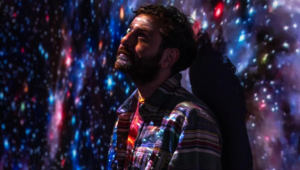Jun Luo is the winner of ZWO 2020 ASIWEEK #30 and has brought us many extraordinary astronomy photos. To make our ZWOers know this excellent astrophotographer better, we make this interview. Let’s all take a look now.
Q1: Hello Jun! Congratulations that your nice work won ASIWEEK! First, could you please make a brief self-introduction?
My name is Jun Luo. I was born in Urumqi, Xinjiang, China and currently live in Tampa Florida, US. I had been into photography for many years. I was mostly self-taught and my main interest is landscape photography. My wife and I adopted an Aruban Cunucu a couple of years ago. His name is Cheetah. Now Cheetah has more photos than all my landscape and astro photos combined.
Both of my parents were middle school geography teachers. They found a simple refractor for me and my friends to observe the moon when we were kids. That was definitely the spark that started my interests in looking up the night sky and astronomy in general.
I captured all my images from the driveway of our house. It has some light pollution due to increased urbanization and plenty of street lights. It has a typical suburban sky of Bortle 5/6. I share all my astrophotography work on my Instagram account @xchaos360.

The Whirlpool Galaxy, EdgeHD 9.25X0.7 + Paramount MyT + ASI2600MC Pro + ASI174mm , 40X300s
Q2: When did start astrophotography and how? Do you have a teacher at the very beginning stage?
I started deep space astrophotography about 15 months ago after I tried out a Sky-Watcher Star Adventurer tracker. I had always been interested in astronomy and landscape photography but had never mounted a camera to a telescope. About two years ago, I attended an astrophotography workshop in Banff, Canada. It was more about night time landscape photography. One of the teachers introduced the concept and use of star tracker and equator mount to us. After that, I started reading books, blogs and watching tutorials on the web. In some sense, those are my teachers into astrophotography.

The Jellyfish Nebula, Tele Vue NP127is + Paramount MyT + ASI2600MC Pro + Triad Ultra Quadband Narrowband filter, 26X600s
Q3: What setup do you use? Can you show us some pictures?
Currently I have three main setups:
1. Wide field refractor
My main telescopes for wide fields are a Takahashi FSQ 85EDX and a Tele Vue NP127is. They cover focal length from 330mm to 660mm, which are good for most of nebulae. Both are Petzval refractors that offer large, flat and relatively fast optics.
My main mount is a Paramount MyT controlled by the SkyX for sky modeling, pointing, tracking and capturing. I use Focus Max v4 for autofocus “V” curve runs and refocus during captures.
A PrimaLuceLab Eagle3 computer is used to run all the software, power management and dew control.

Tele Vue NP127is + Paramount MyT + ASI2600MC Pro + ASI290MM mini
2. Galaxy/Planet and longer focal reflector
This is a new set up I recently put together. I chose a Celestron EdgeHD 9.25 SCT for its optics and weight. For galaxy or long nebulae shots, a Celestron 0.7X reducer is used to bring the optics to F7. For autofocusing, a PrimaLuce Lab Esatto 2” microfocuser is used. Celestron OAG and ZWO ASI 174MM mimi are used for guiding.

EdgeHD 9.25 + Paramount MyT + ASI2600MC Pro + ASI174MM mini
3. Travel set up
I had planned an astro/photography trip to Easter Island, Chile to image the Southern sky in March 2020. This portable set up was put together so that I can carry all the equipments on a plane and still be able to produce excellent result. The mount was a Rainbow Astro RST-135 Harmonic Drive. I was so glad ASIAIR (the original version) worked very well with this mount. The collaboration between Rainbow Astro and ZWO was very impressive. Portable harmonic drive could very well be the future of astrophotography mount and ASIAIR is the perfect companion for it on the road.

Takahashi FS-60CB + Rainbow Astro RST-135 + ASI1600MM Pro + ASI290MM mini
Since I have RST-135 and ASIAIR as the center pieces of the travel set up, the rest are mostly ZWO products to make everything work together seamlessly. The imaging scope is a Takahashi FS-60CB. With reducer and extender, it covers focal lengths from 255mm to 600mm. Motorized focus is done by ZWO EAF with hand controller/ASIAIR. ZWO OAG with ASI290mini for guiding. The imaging camera is ASI1600MM Pro and ZWO 8 position EFW loaded with Astrodon LRGB and narrowband filters. ASIAIR (later upgraded to an ASIAIR Pro) together with a Pegasus Powerbox, provide all the power outputs needed for electronics. A Celestron Powertank Lithium (Airline approved) is the main power source.

ZWO portable set up
Unfortunately, after I put everything together and tested the imaging workflow, my trip was canceled one week before departure due to the pandemic. I’m sure whenever this trip becomes reality again, I will be able to enjoy this set up and capture some good photos.
This colorized Hydrogen-alpha(Ha) photo of the Rosette Nebula was taken during the practice run of this travel set up.

The Rosette Nebula, Takahashi FS-60CB + Rainbow Astro RST-135 + ASI1600MM Pro + ASIAIR, 20X300s Ha
Q4: What type of telescope do you prefer?
Since my main interest is imaging, I prefer refractors that provide a large image circle, flat field, excellent color correction and relatively fast aperture. Refractors make set up a lot easier. They do not need much collimation and cool down time. My choice of Takahashi FSQ-85 EDX and Tele Vue NP127is apparently reflected my consideration. Both are Petzval astrograph telescopes that are built for imaging.
Reflectors like the EdgeHD and many others are interesting to use when I get the chance. They provide much longer focal length or much faster aperture that may be more suited for certain targets.
Q5: Would you mind telling us how did you capture your winning image Trifid Nebula? And how did you successfully bring out those beautiful colors?

The Trifid Nebula, EdgeHD 9.25 X 0.7 + Paramount MyT + ASI2600MC Pro + ASI174MM Mini + Celestron OAG, 42X180s
The Trifid Nebula was the second deep-sky objects I photographed using my “Galazxy” long focal length set up. I did some planning beforehand and noticed that the Trifid Nebula fits nicely in an EdgeHD 9.25X0.7(reducer) and ASI2600MC Pro field of view.
The capturing process was uneventful. After polar alignment, I ran a 40-points sky model. It confirmed that the polar alignment was excellent on both axes. After running an autofocus routine to make sure focus was accurate, I started a sequence to capture 180 seconds subs. I refocused about every 8 frames. It was a hot and humid summer night in Florida and the focus actually shifted quite a bit during the imaging session. ASI174mm mini did a great job picking up guiding stars. The seeing was good that night. I remembered the total RMS tracking error was between 0.5 ~ 0.8 throughout the night, which was a nice surprise to me given the long focal length. (1645mm) I ended up with 42 usable light frames, which amounts to just over 2 hours of integration time.
Most of the post processing was done in PixInsight. The master file from ASI2600MC Pro is always a joy to edit. It has very good detail and low noise. Of course, what I liked the most was no amp glow. It made editing so much easier. I read about Trifid Nebula before and had some understanding where those colors come from. My goal was to bring out the red in emission nebula, the blue in reflection nebula and improve the contrast of the dark nebula in the middle. The PixInsight ColorMask script is very handy to isolate color channels and individually adjust color curves. That’s probably the main editing steps that helped to bring out the colors. I used a denoise/sharpening plug-in (Topaz Labs DeNoise AI) in Photoshop as the final step to make the image “pop” a bit more.
Q6: When did you get your ASI2600MC Pro? Why did you choose it? Is it a good match with your telescope?
I pre-ordered ASI2600MC Pro in late 2019. At that time, I was trying out the OPT Triad Ultra Quad-band narrowband filter with ASI294MC Pro. Such combo works wonders in a Bortle 5 area for emission nebulae targets. It yielded very good results except one issue, the dreadful amp glow. With narrowband filters, I routinely take 10 minutes subs and the amp glow from ASI294 is very pronounced. Although it can be somehow calibrated out, I was looking for something better. The no amp glow design of ASI2600 MC Pro is godsent. The larger sensor is also a selling point for me. The pixel size of ASI2600MC Pro matched my refractor focal length very well. It falls in the “well-sampled” zone.

The Rosette Nebula, Tele Vue NP127is + Paramount MyT + ASI2600MC Pro + Triad Ultra Quad-band Narrowband filter, 20X600s
Q7: What’s the biggest difficulty you think of astrophotography? How do you normally handle it?
Astrophotography is definitely one of the more difficult forms of photography. Many factors need to go right in order to produce a satisfactory result.
On the technical side, the most difficult and also the most important part is to get a good telescope mount. A mount that is easy to polar align and can point and track accurately makes everything else much easier. Not everyone can afford the best of mounts available. However, if one is passionate about astrophotography and willing to invest the necessary time and money into it, he/she should seriously consider buying or saving up for the best mount they could afford. That will lay a solid foundation for the future. I started with a Sky-Watcher Star Adventurer and eventually saved enough to purchase a used Paramount MyT mount. It made a world of difference in my imaging workflow and end result.
On the non-technical side, it is probably more difficult to stay focused and keep even-keeled through ups and downs one is sure to experience. There are so many variables in the process. Any of them could go wrong and ruins an imaging session. I had seen many people giving up astrophotography after a short stint. Good hardware and software surely help but do not automatically lead to good photos. I found it easier for me to accept that I will always be a student in this hobby and the best way forward is to keep learning. I had felt frustrated many times as well. With help of the community and a calmer mind, I had solved many issues and learned even more during the process. I’m now even in the position to offer help to other people. That is just as satisfying as creating a pretty picture.

The Bubble Nebula, Takahashi FSQ-85 EDX + Paramount MyT + ASI1600MM Pro, 5X600s on each narrowband filter
Q8: What post-processing software do you use? People say the complex astrophotography software is one of the reasons that makes newcomers tend to give up at the beginning. What do you think?
I’m using PixInight and Photoshop for my post-processing these days. I’m still learning both software to create my own workflow and processing techniques.
I can relate to the concerns regarding post processing as I was a beginner just 15 months ago. I would say the best way to find out is to start using the software one can find or afford, watch a lot of tutorials and ask for help when necessary. There are both free software like DeepSkyStacker, Sequator, GIMP and commercial software like PixInsight and Photoshop to try. Some are more intuitive and easier to use than others. One does not need to master everything to produce a “good” photo. The best part is that one can always re-process an old dataset when skills are improved. It is really part of the fun to keep learning and improving.

HH555/Pelican Nebula, Sky-Watcher Esprit 120 + Paramount MyT + ASI1600MM Pro.
10X600s of Ha, OIII and SII filter, SHO Hubble palette process in PixInsight
Q9: Do you ever travel to distant dark places for astrophotography? Are there any interesting experiences that can share with us?
Unfortunately, I had not traveled to any dark site for astrophotography yet. The nearest dark site is about 3 hour’s drive from home. It is definitely what I want to try.
The closest I was going to a dark site actually was March this year (2020) when I was ready to travel to the Easter Island, Chile to image the Southern sky. That’s one of the main reasons I put together the airline friendly travel set up. That trip was canceled due to the pandemic and had been postponed to next year. Hopefully by then I will be able to go and have more astrophotos to share.
Q10: Do you have a favorite region or target on the space?
There are so many interesting and beautiful targets in the sky. If I have to pick only one, it has to be the constellation Orion and its surrounding area. The Great Orion Nebula(M42) is the first true deep space objects I photographed. It is a bright target for beginners to start with. However, due to its bright core and darker nebula clouds, it is quite challenging to “do it right”. I’m pretty sure I’ll be photographing the Orion Nebula every year to keep improving my skill. The Horse Head Nebula is of course another iconic target nearby. The Rosette Nebula not far from Orion is also a winter favorite target for both RGB and narrowband capturing.

The Orion Nebula, Tele Vue NP127is + Paramount MyT + ASI2600MC Pro + Triad Ultra Quad-band Narrowband filter
16X300s + 16X180s + 10X10s
In summer sky, my favorite area is definitely in the constellation of Cygnus. From close up to the Crescent nebula to wide /ultrawide field of the whole Cygnus area, from the North America Nebula, Pelican Nebula to the Veil Nebula and Cygnus loop, there are so many interesting targets to try different techniques. One of my goals of this summer is to photography a multi-panel mosaic of the Cygnus loop.

The Eastern Veil Nebula, FS-60CB + Sky-Watcher EQ6R-Pro, ASI1600MM Pro, 20X180s Ha and OIII
Q11: Do you think astrophotography somehow changed you over the past times ever since you are into this hobby?
In many ways, the answer is yes. Astrophotography is both challenging and rewarding. It takes a lot of effort to understand the general principles and troubleshoot all the issues that are sure to come up. Since I started this hobby about 15 months ago, I think I had become more patient. I believe one has to be patient to be able to learn and master this “technical art” form. Many things could go wrong during an imaging session. There are not many quick and dirty ways to get that “pretty picture” in a snap. When the problem rises, I had to calm down and focus to find out the issues and search for answers.
Q12: Do you know ZWO ASIAIR PRO? What features of it you might feel interested in and what new features you expect it can add in the future?
I currently have a ZWO ASIAIR PRO as the controlling unit of my travel set up. It works very well with the Rainbow Astro RST-135 mount. I had the original ASIAIR that drives a Sky-Watcher EQ6R-Pro mount and it was truly a pleasure to use. The ASIAIR PRO apparently had added many new hardware and software features. The plate solving and guiding are fast and solid as ever. Those are the features I love the most.
I’d love to see ASIAIR Pro adding a robust and accurate autofocusing function, especially if it can be added as an autorun step.

ASIAIR PRO in travel set up
Q13: What suggestion or feedback do you want to speak with us?
ZWO had made a huge impact on the astrophotography community with so many high-quality products at a reasonable price. Keep up the great work. If anything, keep listening to community feedback, answering technical support questions promptly and providing excellent customer services.
On a side note, an “ASI2600MM Pro” would be a fantastic addition to the ASI line up. There is a huge sensor size and price gap between ASI1600MM Pro and ASI6200 MM Pro. It could be the dream camera for many astrophotographers.
